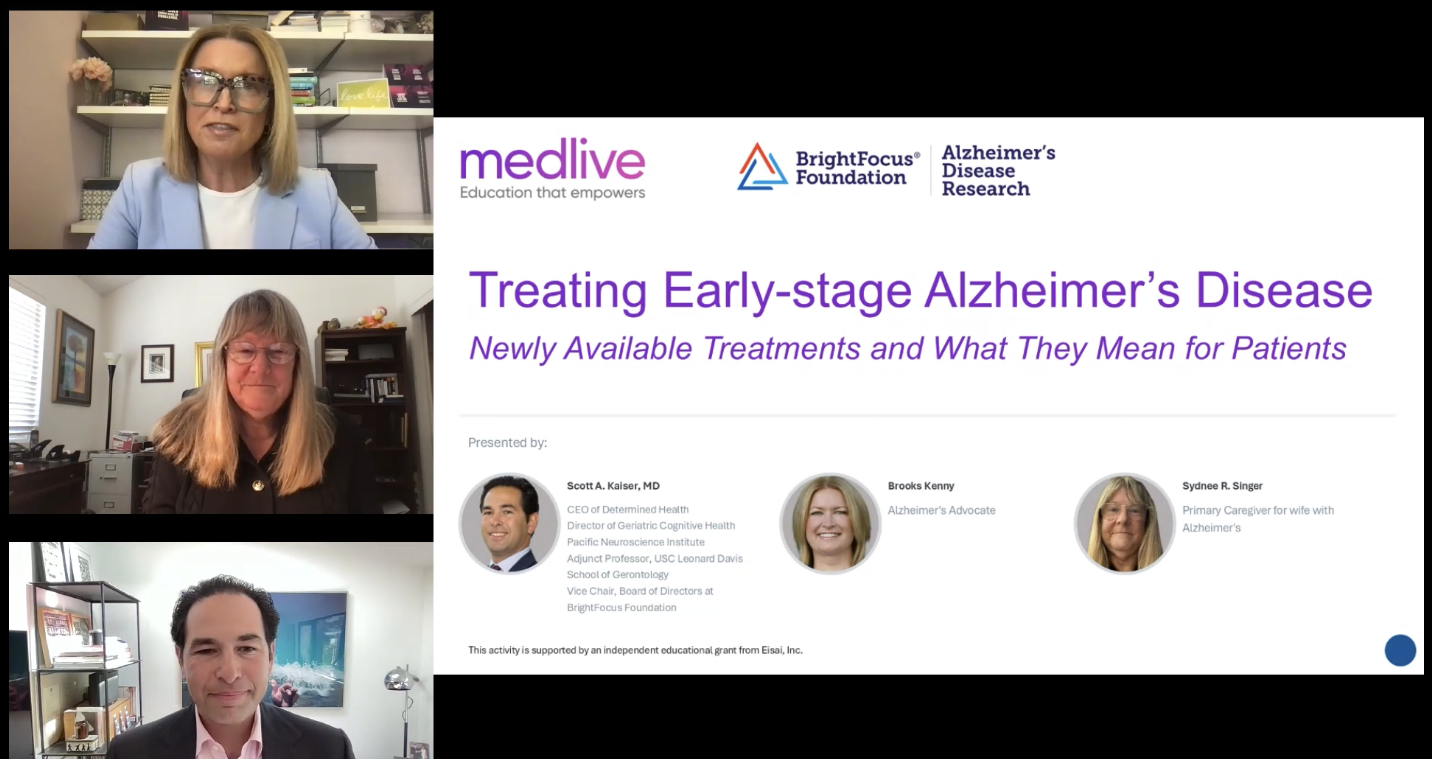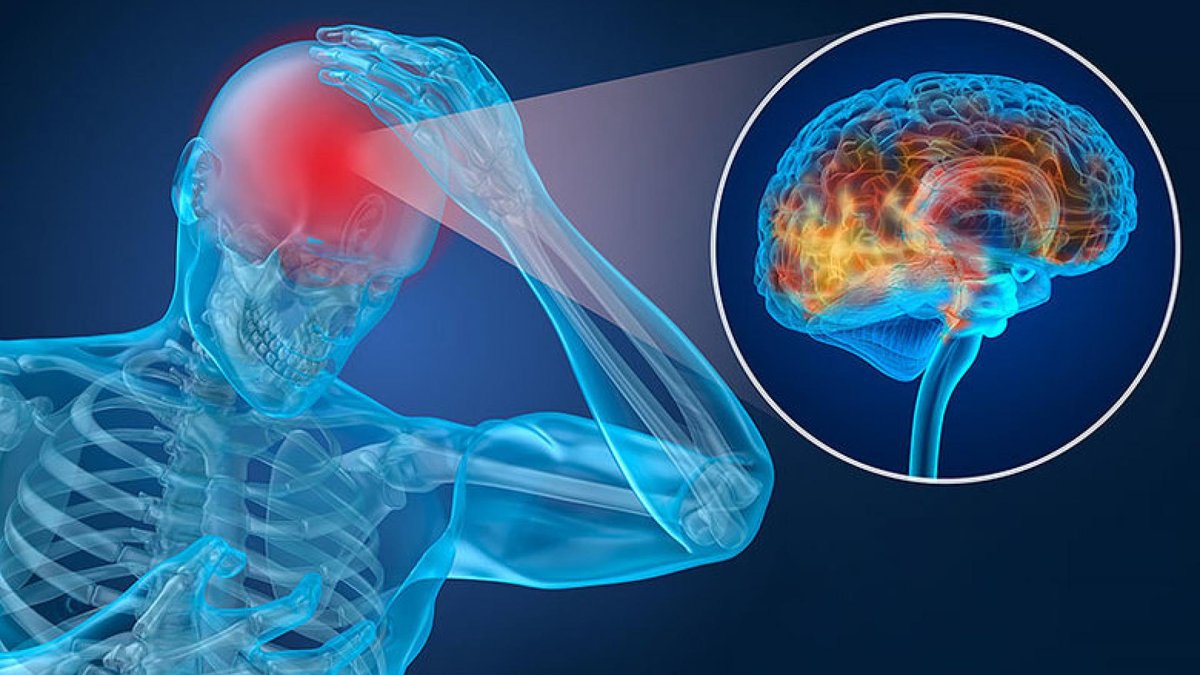
Learn how the immune system and inflammation play a role in the development of Alzheimer’s disease, and how targeting specific elements of the inflammatory process could be useful in treating or preventing this brain disorder.
Our understanding of diseases often follows a predictable journey. First, we begin to understand that a group of symptoms occur together. For example, we know that a sore throat can occur with cough and fever. Next, we learn to split hairs, separating disorders that appear similar but have different causes and courses. The sore throat with fever, cough, difficulty swallowing, and white spots on the tonsils is not like the one that doesn’t have these extra features. We often learn about the disease’s course before we know what causes the disease.
In the case of the more severe sore throat, its potential for leaving serious heart damage was understood before its cause, strep infection, was made possible by advances in diagnostic techniques. Once a cause is known, researchers may be able to design a specific treatment, but not always. We know the antibiotics that are likely to defeat strep throat, but we still have no cure for the more common viral sore throat.
Where does our understanding of Alzheimer’s fit into this scheme? We recognize Alzheimer’s typical combination of symptoms: impaired episodic memory, changes in language or ability to recognize familiar things or perform familiar tasks, apathy or other changes in behavior, and increased dependence on others. We have learned, more or less, to differentiate Alzheimer’s clinically from other conditions that undermine cognitive functioning. We have imaging tools that identify associated brain changes such as atrophy, regional metabolic changes, and accumulation of amyloid plaques and damaged tau protein. However, the debate continues about the basic cause of Alzheimer’s. The swell of interest in inflammation is part of researchers’ efforts to understand better what allows, causes, or worsens Alzheimer’s.
Microscopic Guard Dogs
The body’s immune system, which functions as a security guard by identifying and attacking potential sources of harm, is armed with a variety of protective weapons. Among the most important of these are the cells that roam through blood and tissues, disabling germs and eating their remains. In the bloodstream, these cells are called macrophages.
The related cells in the brain, a highly protected area with its own security system, are called microglia. Like macrophages, the microglia travel around in a resting state until “activated” by a possible danger. Activated microglia, like microscopic guard dogs, are intended to protect the brain but sometimes create havoc in the process. Microglia recognize the amyloid plaques of Alzheimer’s as unwanted and attack them as they would attack an infection.
An Internal Battleground
Unlike an infection that can be defeated, however, the plaques remain a persistent irritant. In the smoldering battle between microglia and plaques, inflammatory chemicals called cytokines and damaging chemicals, such as peroxide, are released. Healthy brain cells can be caught in the friendly fire, and the collateral damage may include injury to healthy cells as well as stepped-up activity of the enzyme BACE1 (beta amyloid cleaving enzyme), which increases the production of toxic amyloid.
Research Findings
Research connecting inflammatory activity with the worsening of Alzheimer’s has come from several sources. Years ago, epidemiologic evidence (measuring the incidence of disease) linked anti-inflammatory drug use to reduced Alzheimer’s risk, although most (but not all) of the subsequent therapeutic trials failed to identify current anti-inflammatory medicines as a treatment or preventive medication for Alzheimer’s.
A current explanation of this therapeutic failure focuses on the different effects that anti-inflammatory treatment might have at different disease stages. They might be helpful as preventive agents but actually hurtful if used later in the course of Alzheimer’s, when their anti-inflammatory effects might interfere with the body’s self-protective response.
Animal studies have linked immune reactions to neurodegeneration and have even shown that virally induced inflammation of the brain leads to Alzheimer’s-like changes. In humans, severe head injury is known to be followed by brain inflammation, and this may explain why head trauma increases the risk for later Alzheimer’s. The complex chemistry of this process is being worked out in laboratories around the world.
Recent advances in neuroimaging allow us to label and view a mitochondrial protein, TSPO, which accumulates in the inflamed brain under conditions that activate microglia. Along with amyloid, this protein is increased in the brains of people with Alzheimer’s. The association of increased TSPO with decreased performance on the Mini-Mental State Examination, a test used to measure cognitive impairment, supports the idea that activation of microglia is bad for cognitive functioning. A current hypothesis is that inflammatory activity in the brain promotes Alzheimer’s by increasing the production of amyloid, killing healthy neurons, and ultimately reducing microglial cells’ ability to remove amyloid plaques.
Next Steps
If the connection between immune response and Alzheimer’s is one that contributes to disease, the next step will be to see whether this understanding leads to improved treatment. Among the lessons this theory holds for us are the following:
- Research has already taught us that inflammation is a two-edged sword—a well-intentioned but sometimes destructive helper. Prevention and appropriate treatment of chronic inflammatory conditions, including such conditions as inflammation of the gums (which has been linked with an increased risk for dementia), are very important. Chronic inflammatory conditions, of course, threaten not only the brain but also the health of the heart, kidney, and other internal organs.
- Scientists are actively developing animal models and human studies to understand in more depth how immune reactions interact with the various features of Alzheimer’s. Models have shown that cognitive improvements can be achieved by blocking the inflammatory proteins that microglia release when activated. Identifying valid and affordable biomarkers of brain inflammation is an important part of pushing research in this area forward. This research will further our understanding of Alzheimer’s and other aspects of health and disease.
- In time, we may all benefit from new treatments that alter the immune system’s activity in people with, or at increased risk for, Alzheimer’s. Current research is seeking drugs that will reduce the aggressive activity of microglia and allow them to clean up the amyloid plaques with less collateral damage. These drugs might eventually be part of a “cocktail” of cooperating medications that reduce toxic amyloid production, increase its elimination, and change the course of this damaging disease.
Explore a sample of the many research projects that BrightFocus funds regarding inflammation and Alzheimer’s disease:
- The Role of TREM2, a Key Immune Regulating Protein, in Alzheimer’s Disease
- A Novel Cellular Mechanism to Understand Spreading of Tau Aggregation in Alzheimer’s Disease Brain
- Role of Microglia in Alzheimer’s Disease: Deleterious or Helpful?
- Understanding Brain Inflammation in Alzheimer’s Disease
- How Inflammation in the Brain and Periphery Affects Brain Pathology in Common Dementias such as Alzheimer’s Disease
About BrightFocus Foundation
BrightFocus Foundation is a premier global nonprofit funder of research to defeat Alzheimer’s, macular degeneration, and glaucoma. Through its flagship research programs — Alzheimer’s Disease Research, Macular Degeneration Research, and National Glaucoma Research— the Foundation has awarded nearly $300 million in groundbreaking research funding over the past 51 years and shares the latest research findings, expert information, and resources to empower the millions impacted by these devastating diseases. Learn more at brightfocus.org.
Disclaimer: The information provided here is a public service of BrightFocus Foundation and is not intended to constitute medical advice. Please consult your physician for personalized medical, dietary, and/or exercise advice. Any medications or supplements should only be taken under medical supervision. BrightFocus Foundation does not endorse any medical products or therapies.










